Are There Rats in Canada? 4 Common Types (With Pictures)
-
Kathryn Copeland
- Last updated:
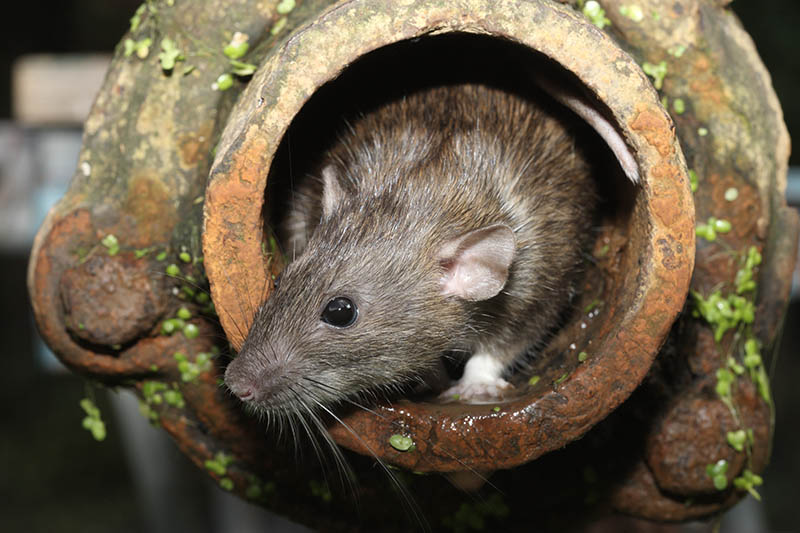
A pet rat is probably the only kind of rat that anyone wants in their home. Rats can be found worldwide, but most are not native to their respective countries.
Brown rats originated¹ in Southeast Asia, and for the past 200,000 years, they have made their way around the entire world.
Technically, four types of rats are found in Canada, but two are not pests that tend to enter homes. But they are still rats, so they are listed here.
We cover the different types of rats found in Canada and provide you with several facts about them and tips for homeowners if you suspect that you might have a rat problem.
The 4 Types of Rats in Canada
1. Brown Rat
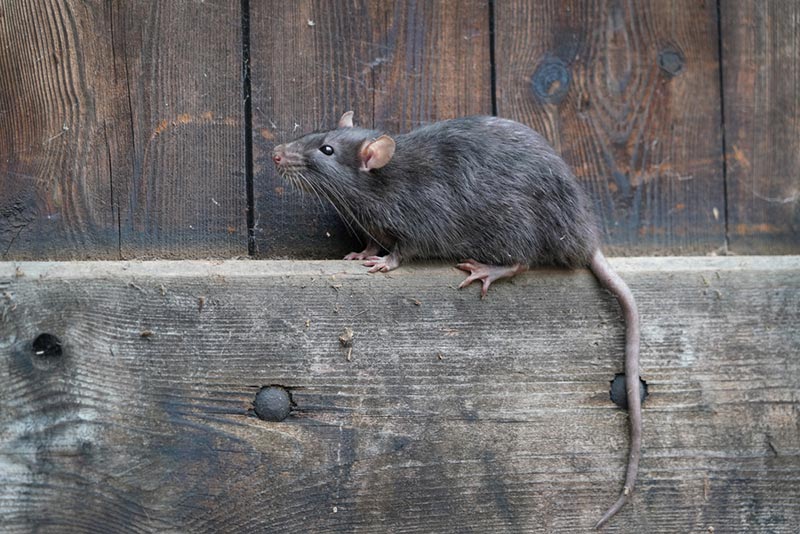
| Scientific Name: | Rattus norvegicus |
| Colour: | Brown |
| Size: | 16 inches, including tail |
| Habitat: | Sewers, around human habitation |
| Range: | Across Canada |
The Brown Rat¹ is also known as the Norway Rat and the Sewer Rat. The name “Norway Rat” is actually a misnomer because they did not originally come from Norway, but from northern China.
They were introduced to the rest of the world in the early 1800s by hitching rides on trading ships. They have been found on every continent besides Antarctica.
Brown Rats average 16 inches in length, including the tail, which tends to be shorter than the body.
They initially started living in forests but today, prefer to live wherever there are humans. They can eat almost anything, including whatever you have in your cupboards, and are active at dusk and at night.
One Brown Rat female can produce seven litters every year, and their lifespan, when not kept as pets, is about 2 years.
2. Black Rat
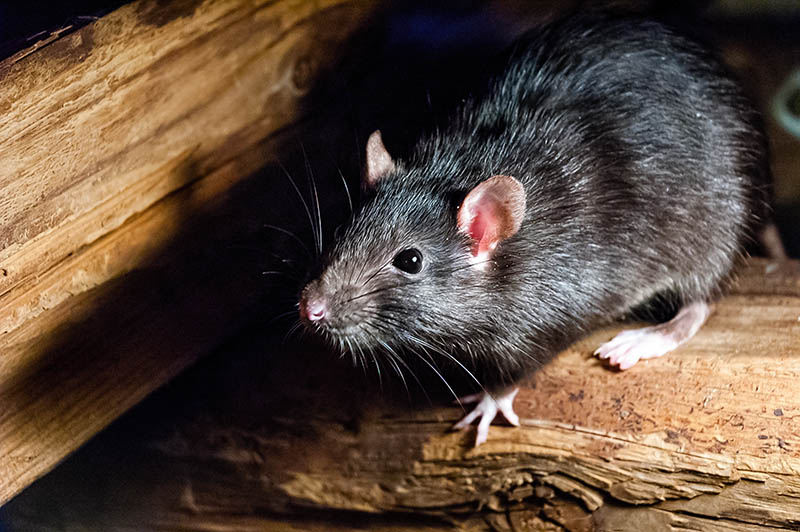
| Scientific Name: | Rattus rattus |
| Colour: | Black |
| Size: | 5–7 inches, tail is 6–8 inches |
| Habitat: | Coast, near human habitations |
| Range: | Across Canada |
Also known as the House, Roof, and Ship Rat, the Black Rat¹ is thought to have originated in and around India. Like the Brown Rat, they were introduced to the rest of the world via trading ships.
Black Rats are found on every continent and commonly located in coastal areas, but like the Brown Rat, they stick close to where humans live. They are often found on higher levels, like attics, and don’t typically live in sewers like the Brown Rat does.
In fact, the Brown Rat is much more aggressive than the Black Rat, which has been driven out of areas in farms and towns with temperate climates by the Brown Rat.
Black Rats average 11 to 15 inches, including the tail, which is typically longer than the body. They are primarily vegetarian but will ingest invertebrates and insects when necessary.
Black Rat females can produce five litters in a year, and their lifespan as wild rats averages about 1 year.
3. Muskrat

| Scientific Name: | Ondatra zibethicus |
| Colour: | Brown |
| Size: | 16–25 inches |
| Habitat: | Wetlands, waterways |
| Range: | Across Canada |
The Muskrat¹ is a rat but not a pest. They are medium-sized mammals that spend most of their time in the water, and while some people think that they are related to Beavers, they aren’t.
Muskrats are found throughout North America, including along the Mexican border, though they are indigenous to Canada.
They spend most of their time in water and prefer the water level to be around 4 to 6 feet deep. They make nests with aquatic vegetation, which is also what makes up their diet.
They are great swimmers and are known to stay underwater for 12 to 17 minutes but tend to be fairly slow on land. Muskrats can live up to 10 years in captivity but only about 3 years in the wild.
4. Bushy-Tailed Woodrat
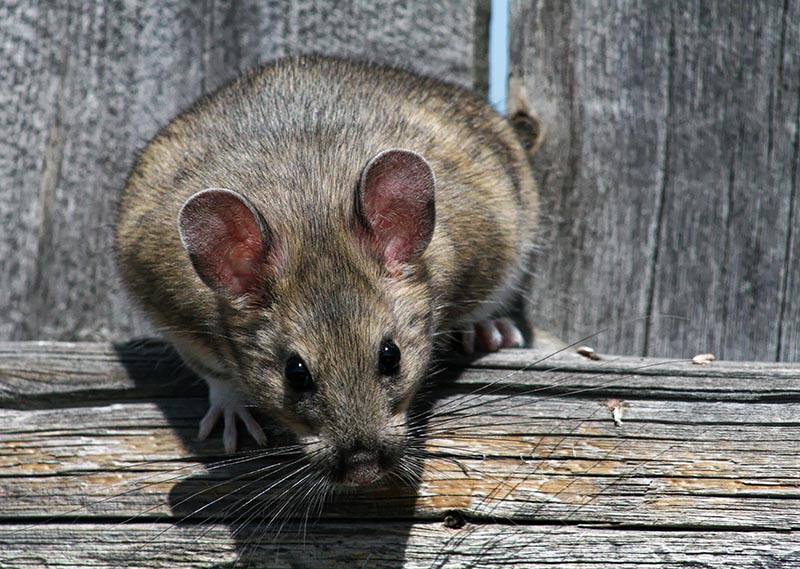
| Scientific Name: | Neotoma cinerea |
| Colour: | Brownish grey |
| Size: | 15–18 inches |
| Habitat: | Mountainous areas in rocky outcroppings |
| Range: | Western Canada |
Also known as the pack rat, the Bushy-Tailed Woodrat¹ is not a pest in any way, but they are technically a rat, like the Muskrat.
They are located in the western areas of North America, which includes parts of the Yukon, Northwest Territories, British Columbia, and western Alberta.
Woodrats can be found everywhere, from deserts to boreal forests, and live on rocky outcroppings and in abandoned buildings.
One of the most interesting aspects of the Woodrat is how they make their dwellings, which are called middens. These consist of plants, feces, and other materials, and the whole thing is solidified with crystallized urine.
They are primarily herbivores and get their water intake through the plants that they eat. In other words, Woodrats don’t need to drink! They have a lifespan of 2 years in the wild and have been known to live up to 6 years in captivity.
Tips for Homeowners
While you’re unlikely to have any issues with Muskrats or Bushy-Tailed Woodrats entering your homes, Brown and Black Rats are known pests that will invade if given a chance.
Unfortunately, rats do spread disease, and the Brown Rat in particular has been known to attack sleeping humans and will damage wires, drains, and property and contaminate food.
Infestation
- Droppings: Brown Rat droppings are dark brown and can look like large grains of rice. The droppings can be found in concentrated areas, as rats can produce up to 50 droppings each night.
- Scratching sounds:Black Rats will make scratching and gnawing sounds in higher places, like lofts and attics. Brown Rats will make similar noises but from below floorboards and under decks and sheds.
- Chew marks:Rats constantly gnaw on things to trim their teeth, which grow continuously. You might find chew marks on food bags and on wires.
- Burrows:Brown Rats will dig extensive burrows underground, so check your shed, decks, garages, and compost heaps for signs of digging.
- Nests:Rats typically build nests close to food sources, so check around appliances, including cupboards and fridges.
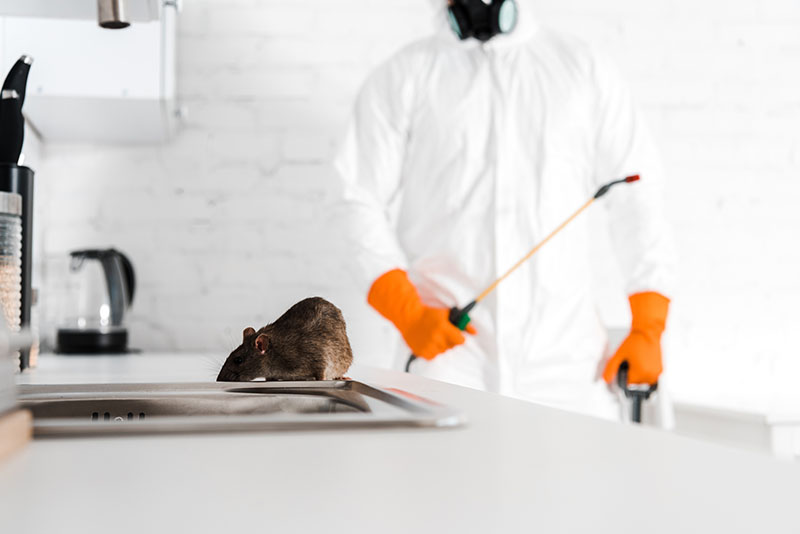
Preventing Rats
If you suspect that you might have rats, you can set up rat traps or call in a professional exterminator. But to prevent rats from entering your home in the first place, we have a few tips:
- Always keep your kitchen clean. Wipe up any crumbs or spills immediately but especially before bed. The same goes for any room; if you’re eating in your living room, keep on top of cleaning up food and washing the dishes.
- Remove bird feeders or any pet food from areas where rats can get at them. Keep food in glass or metal contains with tight-fitting lids.
- Clean and remove trash cans regularly. Keep them well sealed before garbage day.
- Keep grass, bushes, and trees trimmed back away from the house.
- Find any cracks or holes around your home’s foundation, and have them filled. Use foam or caulk.
- Keep your property free from clutter.
- Ensure that your windows are sealed, along with the doors.
- Keep your roof in good repair.
- Keep toilet seats closed.
Final Thoughts
Unless you intentionally bring a rat into your home as a pet, they are one of the most unwelcome visitors that you can ask for! Brown Rats in particular are aggressive, large, and potential carriers of diseases.
While rats are clean creatures that spend a great deal of time grooming themselves, they are quite capable of contaminating your food and damaging your home.
Use the listed tips to help prevent them from entering your house to begin with, and call in a professional if you suspect that you have more than one rat in your home.
Featured Image Credit: Ernie Cooper, Shutterstock
Contents

